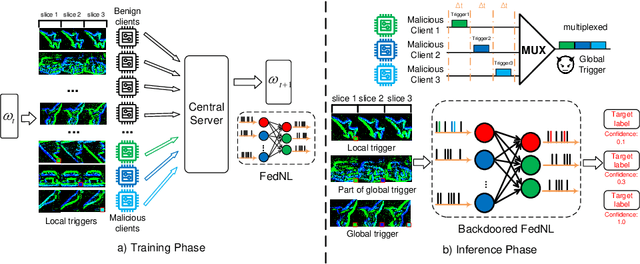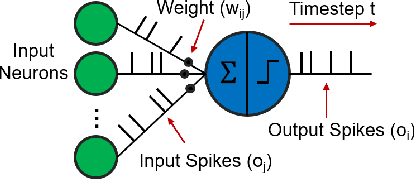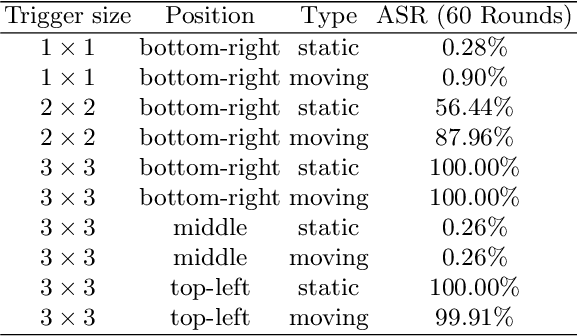Spikewhisper: Temporal Spike Backdoor Attacks on Federated Neuromorphic Learning over Low-power Devices
Paper and Code
Mar 27, 2024



Federated neuromorphic learning (FedNL) leverages event-driven spiking neural networks and federated learning frameworks to effectively execute intelligent analysis tasks over amounts of distributed low-power devices but also perform vulnerability to poisoning attacks. The threat of backdoor attacks on traditional deep neural networks typically comes from time-invariant data. However, in FedNL, unknown threats may be hidden in time-varying spike signals. In this paper, we start to explore a novel vulnerability of FedNL-based systems with the concept of time division multiplexing, termed Spikewhisper, which allows attackers to evade detection as much as possible, as multiple malicious clients can imperceptibly poison with different triggers at different timeslices. In particular, the stealthiness of Spikewhisper is derived from the time-domain divisibility of global triggers, in which each malicious client pastes only one local trigger to a certain timeslice in the neuromorphic sample, and also the polarity and motion of each local trigger can be configured by attackers. Extensive experiments based on two different neuromorphic datasets demonstrate that the attack success rate of Spikewispher is higher than the temporally centralized attacks. Besides, it is validated that the effect of Spikewispher is sensitive to the trigger duration.
 Add to Chrome
Add to Chrome Add to Firefox
Add to Firefox Add to Edge
Add to Edge